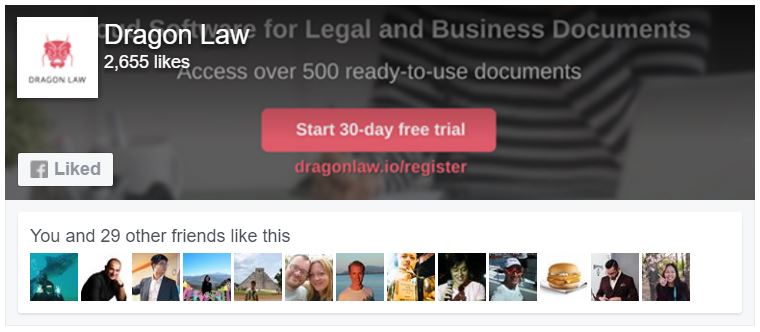Table of Contents
As your prospective customers spend more time online, it is crucial that you have in place an online marketing strategy to capture the attention of new audiences. But do you know where to begin?
With limited time and resources, you’d want to be spending time on the one channel that yields maximum results with minimum investment.

Facebook is the most popular social network around and an essential platform for online marketing with over 1.71 billion monthly active users. ![]() Tweet this
Tweet this
Customers trust third party endorsements and family and friends more than they trust brand marketing. Presence of customer reviews on your Facebook Page help to build your credibility. Small businesses shouldn’t miss out on this opportunity to build a trustworthy online brand and reach and convert more prospects.
Here are 5 top tips for making the most of your Facebook marketing strategy:
1) Create a professional and compelling Facebook page
Before you can start building your company brand on Facebook, you must first have a solid Facebook business page. This is a key touch point between you and your customers and will help you make the most out of your Facebook marketing activity.
Here are some quick tips for creating a solid Facebook page:
|
Source: HubSpot
2) Share content that is visually-attractive, relevant, adds value, and includes clear call-to-action
Every time you Like a Facebook post, there are 4,166,666 people doing the same. In short, there is an insane amount of content generated on Facebook every single day. For you to stand out in this sea of content, abide by these 4 principles: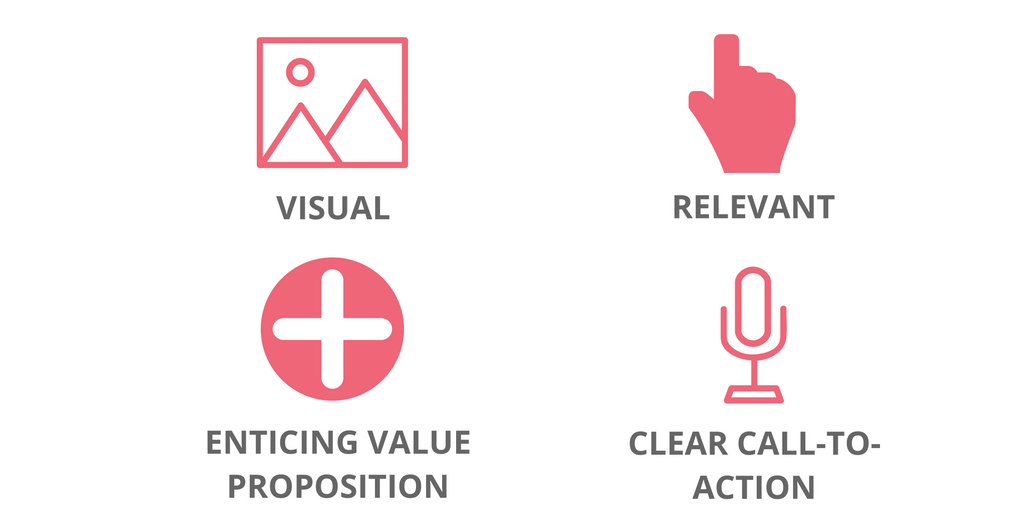
|
Adapted from HubSpot
These 4 principles apply regardless of the type of content you create – whether a post, regular ad, video ad, or event page. Here are some examples of Facebook ads that successfully abide by these 4 principles.
3) It’s not just about your product; there’s so much more
If your business has had an online presence on Facebook for a while, chances are that you would have spent some marketing dollars on Facebook Ads. Marketers like Facebook ads because they can be tailored for your target segment(s), letting you reach even more people based on location, age, gender, interests and more. What businesses sometimes forget is that they can do so much more with Facebook ads, beyond advertising your product.
Here are some suggestions for how you can harness Facebook to draw attention to your business and generate more clicks:
|
Adapted from Hootsuite
By opening up your marketing beyond your core product, you increase brand awareness and recall, generate more leads, and open up the doors for an initial touch point with your customers.
4) Answer the question: What’s in it for me?
Visitors who come across your Facebook ads for the first time may not be compelled to click if they know close to nothing about your product. But that’s not to say they are not your target customer. They may still be in the initial phase of their customer journey where they are understanding their problem, and the solutions that are available to them.
According to Hubspot’s inbound methodology, a typical customer journey comprises of 5 different stages (Strangers → Visitors → Leads → Customers → Promoters); you nurture customers through these stages with different objectives in mind (Attract, Convert, Close and Delight), by employing different marketing methods and channels such as the ones listed below:
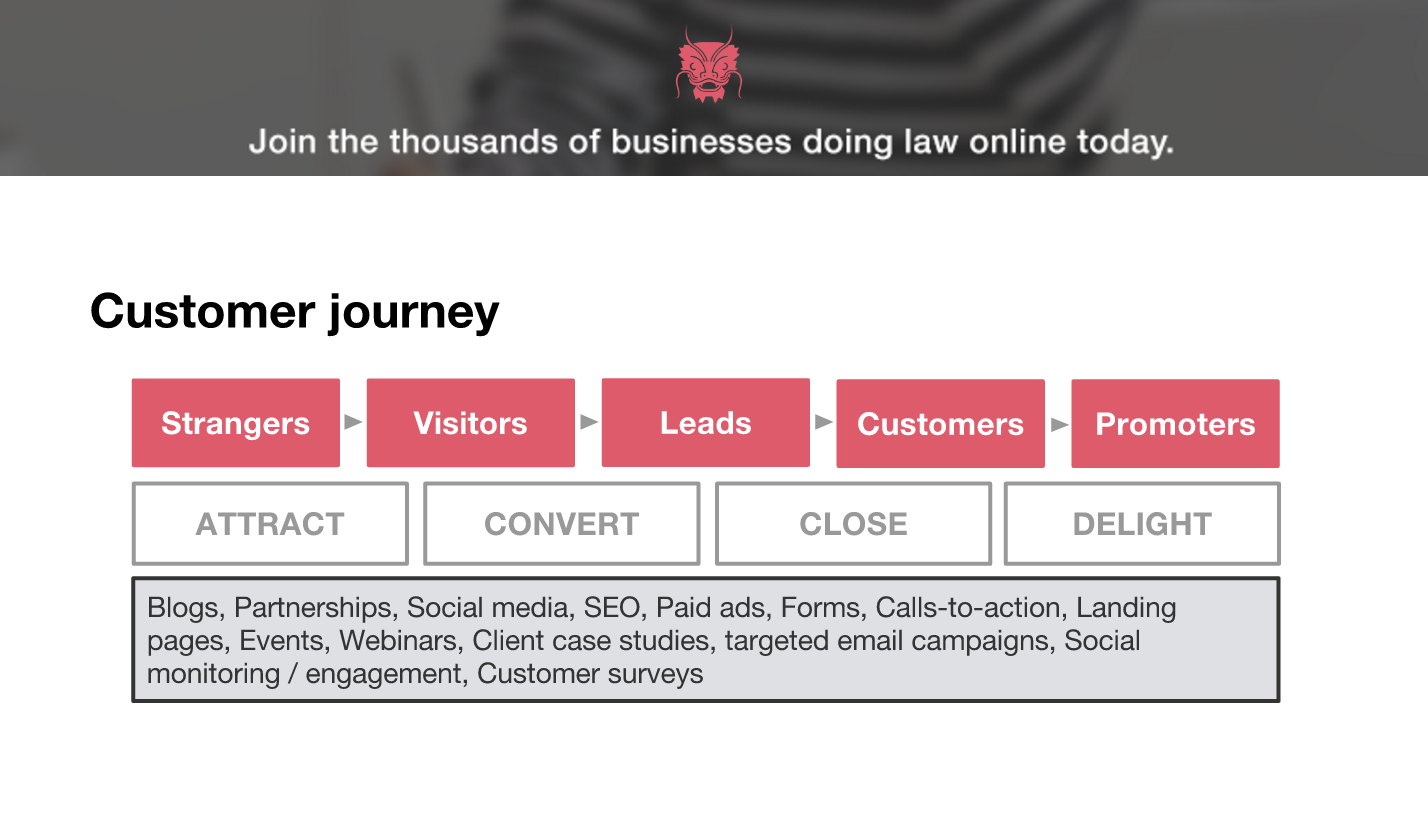 Hubspot’s Inbound Marketing methodology.
Hubspot’s Inbound Marketing methodology.
Source: Zegal Legal Academy: Doing Business Online
This “lead magnet” magic is made possible when you continuously offer useful content to draw new visitors in. Put these content behind a “gate”, or otherwise known as “content upgrades”. When your content is of value, visitors will be happy to provide you with their email address and/or other contact information in return for it.
Examples of gated content include free PowerPoint templates, eBooks, guides, cheat sheets, tool kits, free trials, and discounts.
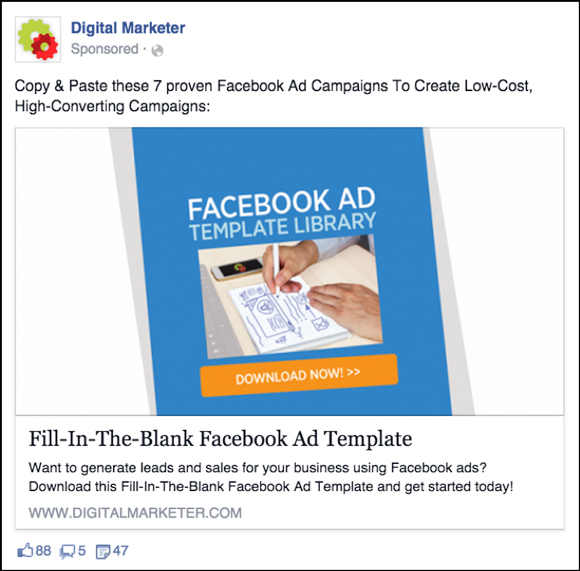
Source: Digital Marketer
In short, whatever goes into your Facebook (or any other form of social media) marketing efforts, make sure you tie it back to your business goals.
Of course, driving traffic to your business’ website means that you should also put your best face forward when it comes to your website. This means paying attention to a whole host of things – ensuring that your website copy is simple and succinct, having in place crucial legal documents such as the Website Privacy Policy and Terms of Use, and building an email list to communicate with your customers.
Claim your free trial. Start drafting legal documents with Zegal today.
5) Use social media management tools
When sharing content on social media, timing is everything. The best time to reach your target audience varies according to your business, product/service, and audience demographic. It is also important to share content regularly as this signals that your business is active and constantly engaging customers.
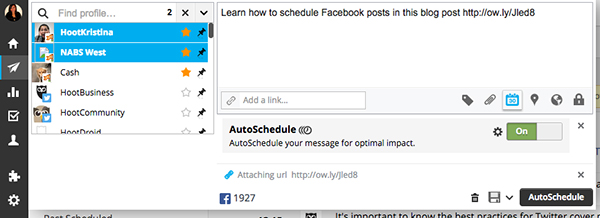
Source: Hootsuite
Every small business struggles with limited manpower and time. Of course you’re not going to designate one person whose role shall be to create and post content on Facebook around the clock! This is where social media management tools such as Hootsuite can help. Block out a day in a week, or a day in a month, just to sit down and schedule posts to go on Facebook. This allows you to schedule your posts at optimal times and gives you a big-picture overview of how much content you have so that you can avoid overwhelming your Facebook audience. Best of all, it allows you to save you time and stress – schedule all your posts ahead of your vacation so that you can enjoy a worry-free holiday!
Did we miss anything? What are some Facebook strategies that have worked for you? Let us know in the comments below!
Alex Tanglao
Alex Tanglao is a seasoned professional with expertise in startups, legal technology, and business management. Alex has held leadership roles, including Director of Strategy & Operations at Elevate Digital, where he streamlined operations and managed teams, and Director of Ecommerce at Allies of Skin, driving global growth. Alex served as Marketing Manager at Zegal, driving legaltech and educating businesses on startup legal topics. With a background in content strategy from LawPath, Alex combines a deep understanding of legal services with operational excellence and innovative marketing strategies to help businesses thrive in dynamic, fast-paced environments.

